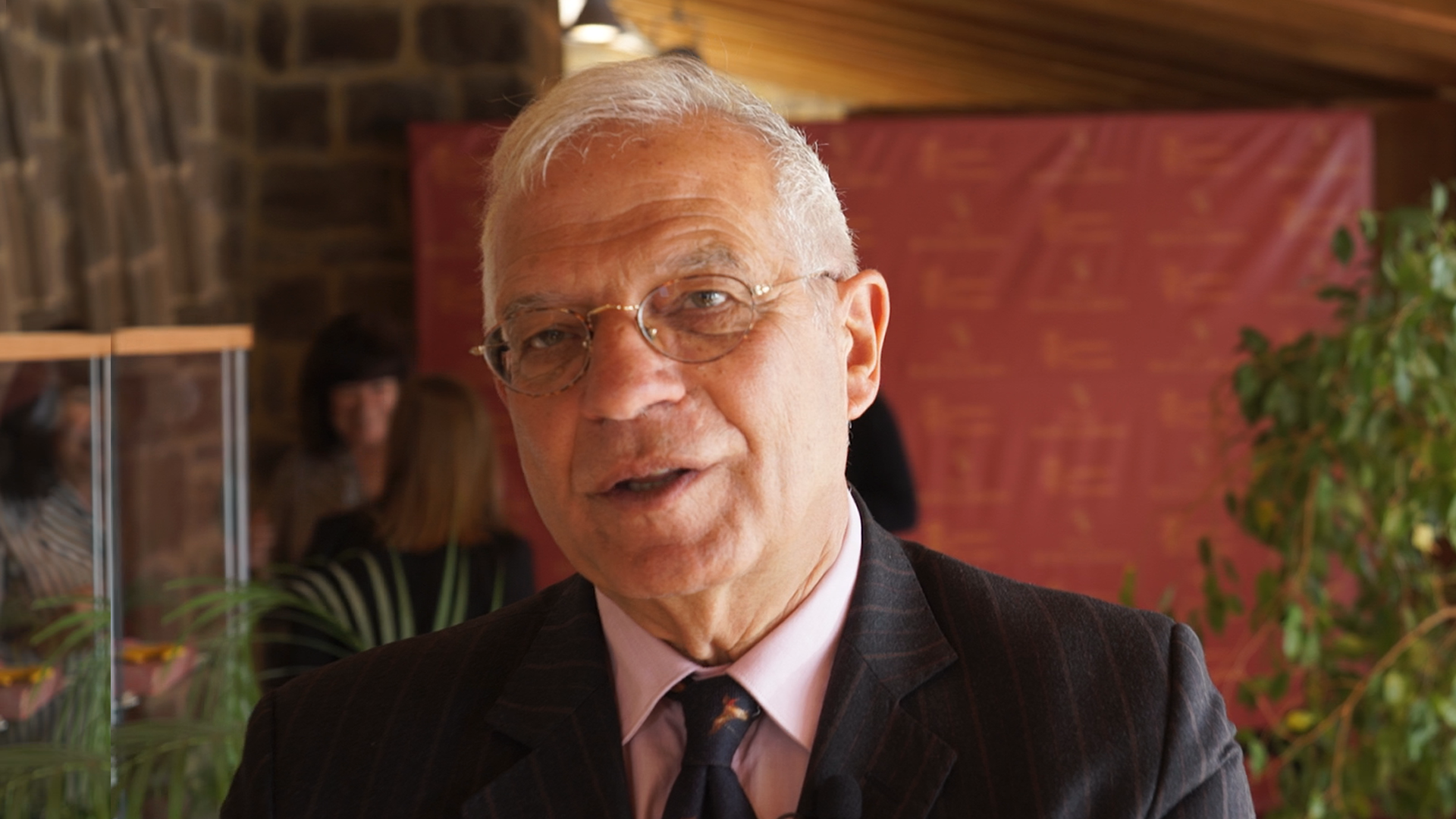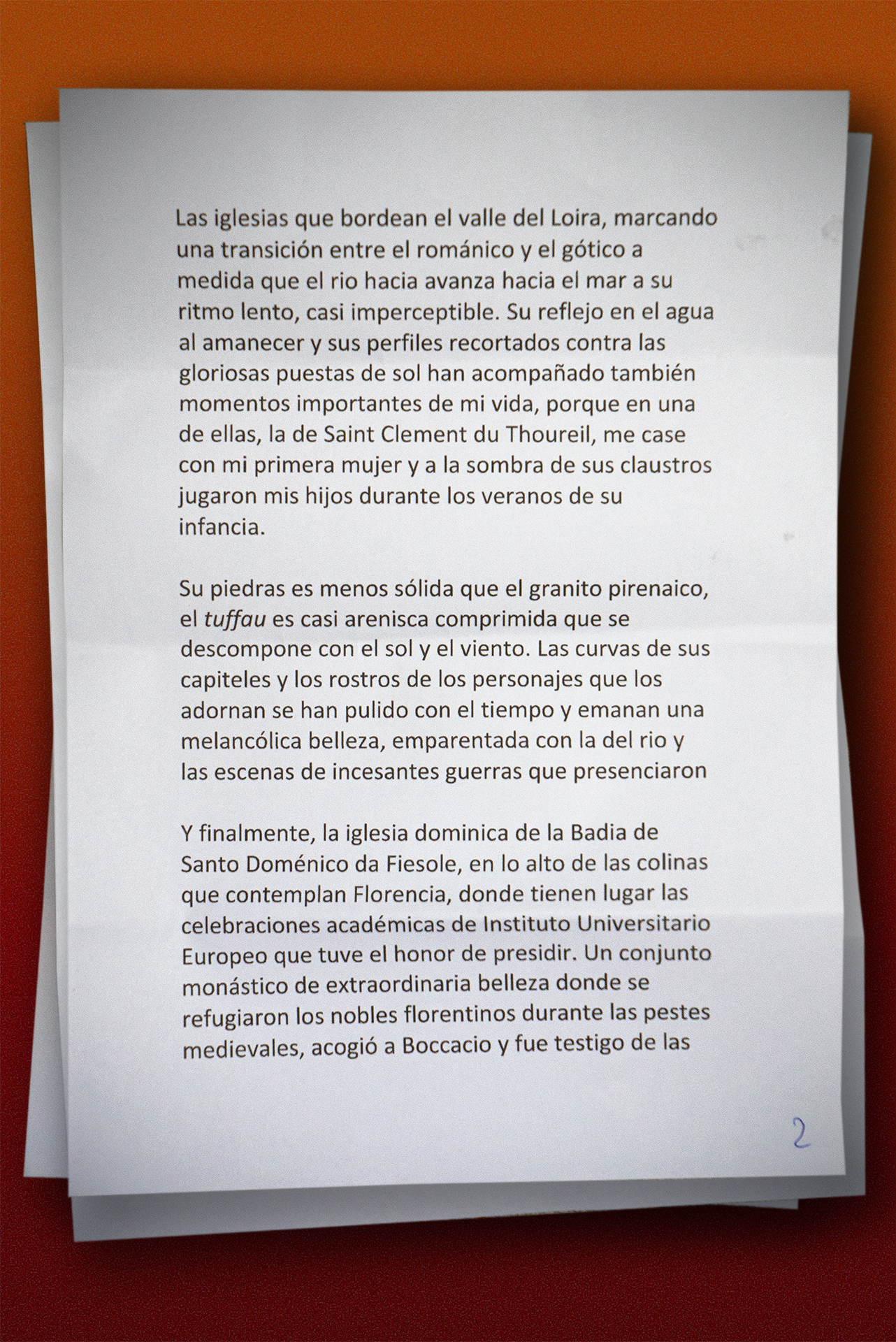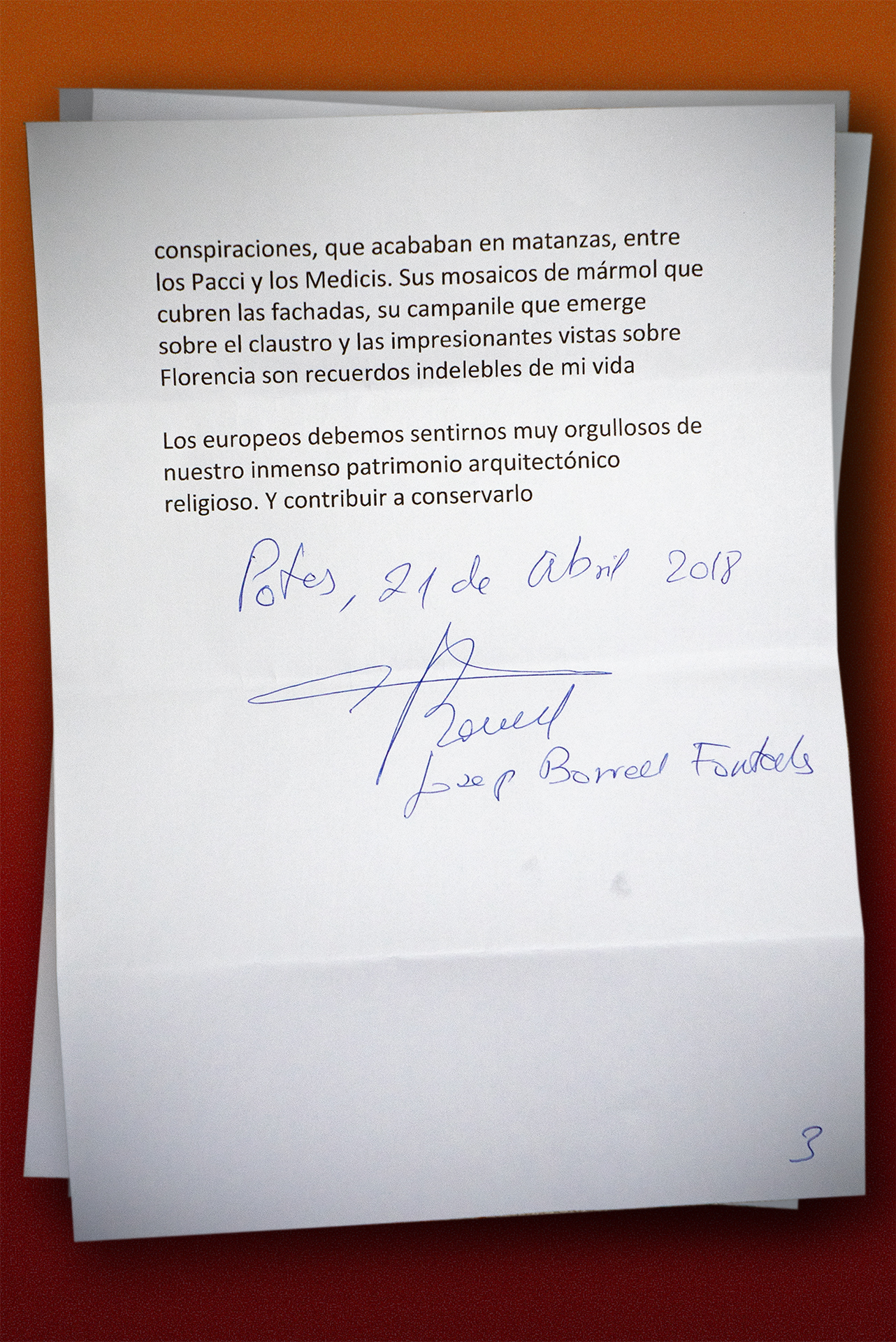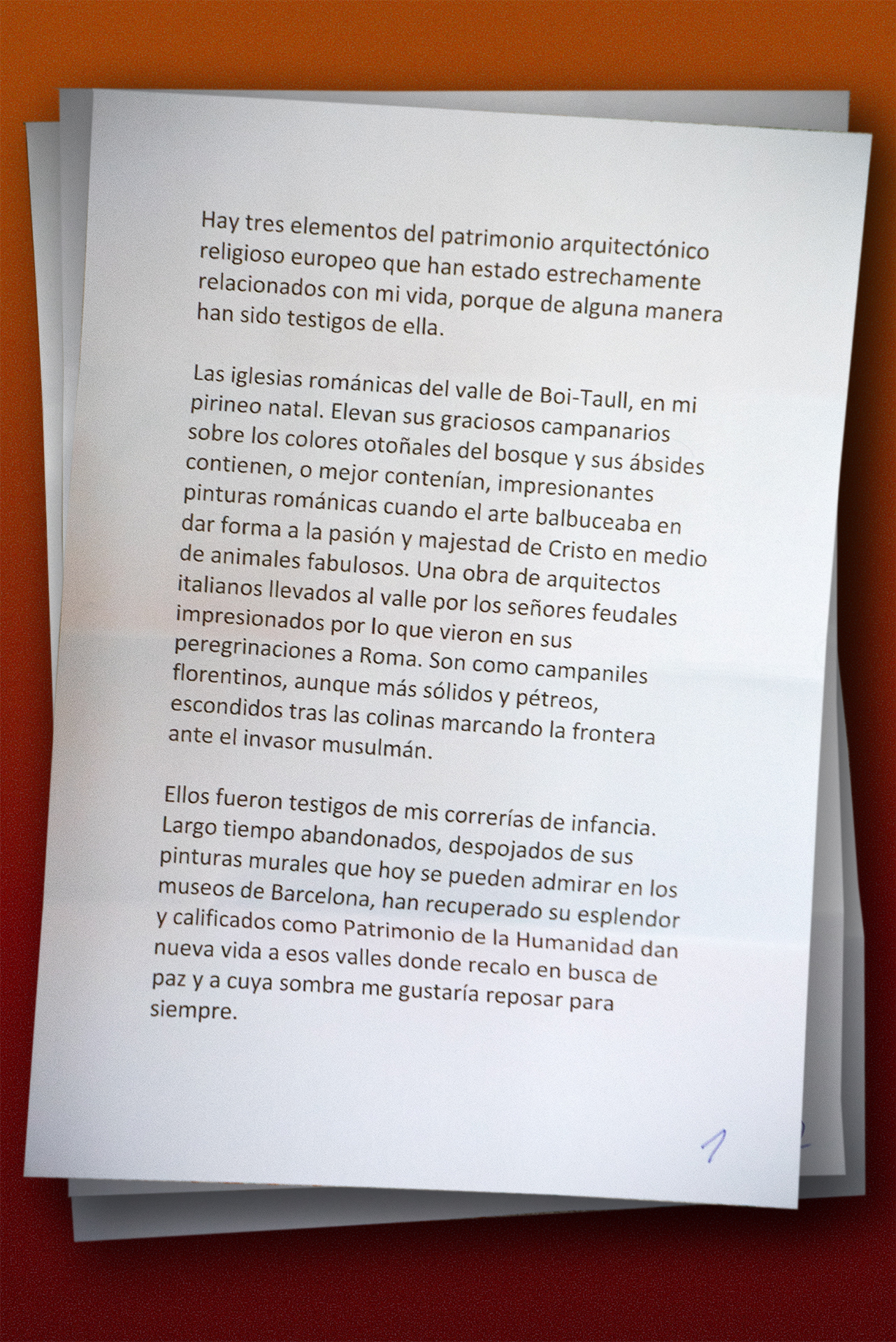
Contribution letter


In English:
There are three elements of the European religious architectural heritage that have been tightly related with my life, since somehow they have been witness of it.
The Romanesque churches of Boi-Taull valley, in my native Pyrenees; they raise their graceful bell towers over the autumnal colors of the forest and their apses contain, or better contained, impressive Romanesque paintings when art babbled in shaping the passion and majesty of Christ in the midst of fabulous animals. A work of Italian architects brought to the valley impressed by what they saw on their pilgrimages to Rome. They are like Florentine bells, although more solid and stony, hidden behind the hills marking the frontier before the Muslim invader.
They witnessed my childhood escapades. A long time abandoned, stripped of their mural paintings that can be admired today in the museums of Barcelona, have recovered their splendor and listed as World Heritage Site give new life to these valleys where I come back in search of peace and in whose shade I would like to rest forever.
The churches bordering the Loire Valley, marking a transition between Romanesque and Gothic as the river moves towards the sea at its slow, almost imperceptible pace. Its reflection in the water at dawn and its forms silhouetted against the glorious sunsets have also accompanied important moments of my life, because in one of them, Saint Clement du Thoureil, I married my first wife and in the shadow of her Cloisters my children played during the summers of their childhood.
Its stone is less solid than the Pyrenean granite; the tuffau is almost compressed sandstone that decomposes with sun and wind. The curves of their capitels and the faces of the characters that adorn them have been polished over time and emanate a melancholy beauty, related to the river and the scenes of incessant wars that witnessed.
And finally, the Romanesque church of Badia de Santo Domenico da Fiesole, on top of the hills overlooking Florence, where the academic celebrations of the European University Institute that I had the honor of presiding over took place. A monastic group of extraordinary beauty where the Florentine nobles took refuge during the medieval plagues, welcomed Boccacio and witnessed the conspiracies, which ended in massacres, between the Pacci and the Medicis. Its marble mosaics that cover the facades, its campanile that emerges over the cloister and the breathtaking views over Florence are indelible memories of my life.
We Europeans should feel very proud of our immense religious architectural heritage. And contribute to keep it.
Potes, 21st of April 2018, Josep Borrell Fontelles






Follow us: